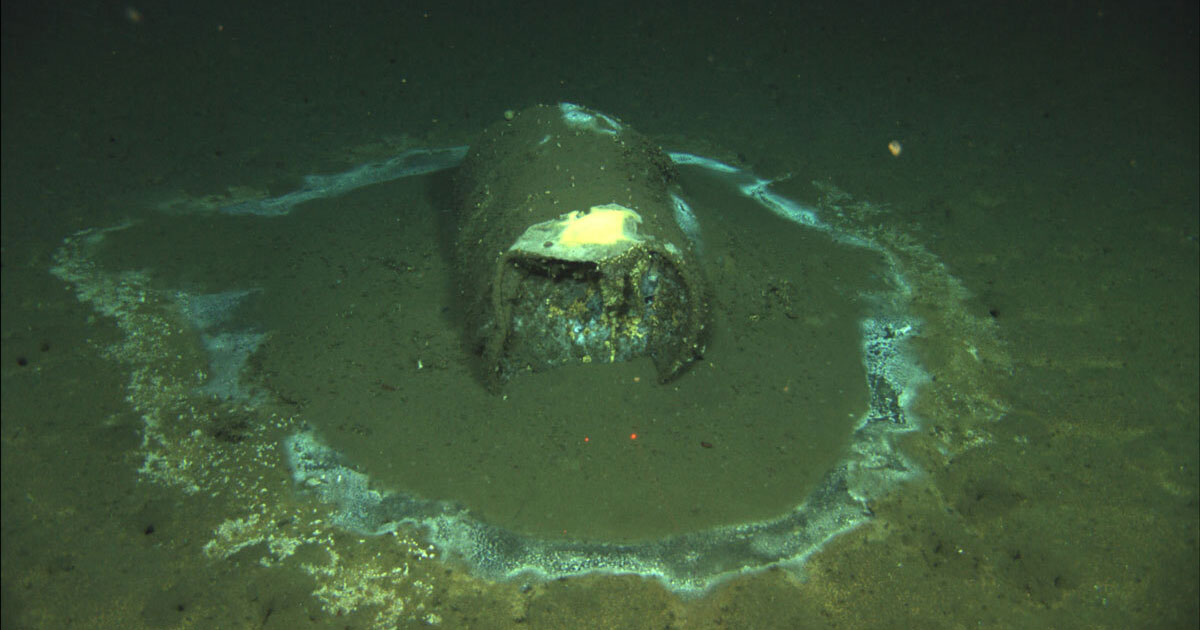
In November 2017, Sean Yoder published an article in the Centre County Gazette that claimed the a portion of the Centre County Kepone was “declared safe for reuse and redevelopment after decades-long cleanup efforts.” This 32-acre Superfund site originally housed Rutgers Organics Corporation, a chemical manufacturing company that created pesticides, namely Mirex and Kepone, from 1958-72 (EPA, Centre County Kepone).
Mirex, or Dechlorane, is an insecticide that was created in 1961 that was also used as a “fire retardant for plastics, rubber, paint, paper, and electrical goods” (EPA, Mirex, 1992). Throughout the 1960s, Mirex was one of the most prominent pesticides used primarily in southeastern US to control fire ants and yellow jackets through aerial spraying onto soil (CDC, Biomonitoring Summary). However, Mirex is not water soluble and attaches to soil and fatty tissue, which makes it difficult to breakdown naturally and bioaccumulates in nearby animals (EPA, Mirex, 1992). Mirex can be absorbed through the skin or gastrointestinal tract, so humans are most likely to be exposed to this chemical through eating fish from contaminated waters or from living near contaminated grounds. Not much is know about Mirex’s effects on humans, particularly at low doses, but high-dose tests on animals revealed that it can cause “liver and kidney damage, and damage to the immune, reproductive, and nervous systems” and a probable carcinogen that can cause liver and kidney cancer, as well as leukemia (EPA, Mirex, 1992).
In the case of the Kepone site, the products were disposed of on-site through spray irrigation, storage in drums, and several earth and concrete lagoons,” pits or dugouts meant for waste treatment (EPA, Centre County Kepone; NRSC, 2016). According to Yoder, issues began to arise in 1960 as people began to complain of “chemical odor coming from Thornton Spring,” which discharged so many chemicals into Spring Creek that the fish there became unsafe for human consumption (Yoder, 2017; Carline, et. al., 2011). For reference, I have marked the locations named on the map below, along with their distance from Penn State. The disposal methods used resulted in the chemicals leaking into the groundwater and being transported around Centre County (EPA, Centre County Kepone).

However, after decades of remediation and funding from the Rutgers Corporation, the site was deemed ready for “ready for reuse and redevelopment” by the EPA in September 2016 (Yoder, 2017). While the site was partially deleted from the National Priority List in 2004, it is expected to remain on the list until 2046 (Yoder, 2017).
Sources:
Biomonitoring Summary. (2017, April 7). Center for Disease Control and Prevention.
https://www.cdc.gov/biomonitoring/Mirex_BiomonitoringSummary.html
Carline, R. F., Dunlap, R. L., Detar, J. E., & Hollender, B. A. (n.d.). The Fishery of Spring Creek. 88.
EPA Mirex Fact Sheet. (1992). United States Environmental Protection Agency.
Jim McClure. (1992). The Kepone-Mirex Problem [Drawing]. From Zettle, F. (1992). A Brief History of the Spring Creek Chapter of Trout Unlimited (Ed Bellis & Jim Strauss, Eds.).
Section VI: WASTE TREATMENT LAGOON (No.) Code 539. (2016). In Field Office Technical Guide. Natural Resources Conservation Service.
Superfund Site: CENTRE COUNTY KEPONE. (n.d.). Environmental Protection Acency. Retrieved March 26, 2021, from
https://cumulis.epa.gov/supercpad/SiteProfiles/index.cfm?fuseaction=second.Cleanup&id=0300444#bkground
Yoder, S. (2017, November 1). After decades, portion of College Township Superfund site is safe for reuse.
Centre County Gazette.
https://www.statecollege.com/centre-county-gazette/after-decades-portion-of-college-township-superfund-site-is-safe-for-reuse/







 Research and clearly describe in suitable detail a strategy that can be used to waste less water. You may consider any use you want: agricultural, domestic, etc.
Research and clearly describe in suitable detail a strategy that can be used to waste less water. You may consider any use you want: agricultural, domestic, etc. Find, present, and explain/describe an example of a population growth strategy that has been employed by a country to convince its population to have fewer children. Comment on the difficulty of such endeavors. Use graphical content to round out your posting.
Find, present, and explain/describe an example of a population growth strategy that has been employed by a country to convince its population to have fewer children. Comment on the difficulty of such endeavors. Use graphical content to round out your posting.


















 Molly Taft wrote an article about how “Underwater Roombas” are cleaning up DDT that is seeping out of old barrels dumped in the pacific.
Molly Taft wrote an article about how “Underwater Roombas” are cleaning up DDT that is seeping out of old barrels dumped in the pacific.